
All categories
Featured selections
Trade Assurance
Buyer Central
Help Center
Get the app
Become a supplier

(2470 products available)














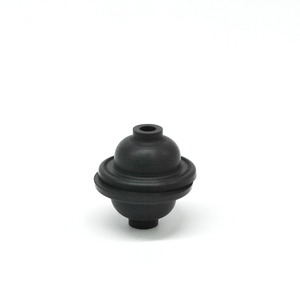

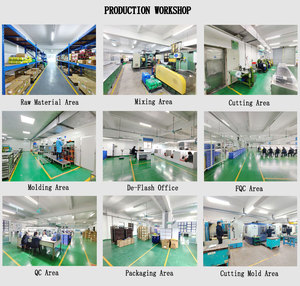







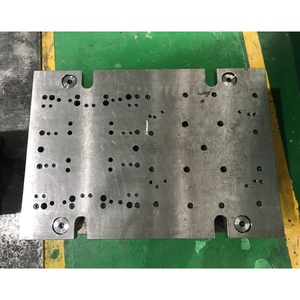




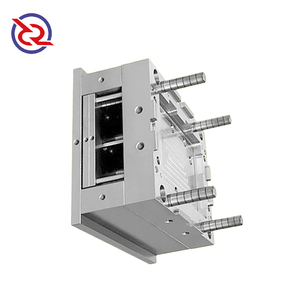

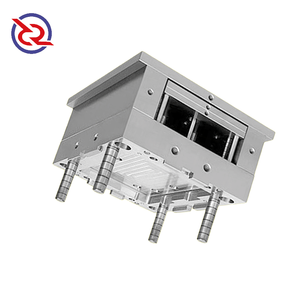







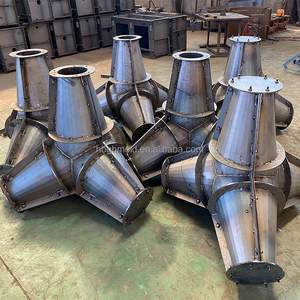










Common materials used for buffer molds include:
Steel
Steel is the most commonly used material for buffer molds, especially in high-volume production. Its durability and resistance to wear make it ideal for creating parts that require consistent precision over time. Steel molds can withstand high temperatures and pressures, making them suitable for use with a wide range of materials, including plastics, metals, and composites. In addition, steel molds can be treated with anti-corrosive coatings to enhance their lifespan, particularly in challenging production environments.
Aluminium
Aluminium buffer molds are preferred when lighter materials are required, situations that do not demand such high volume or temperature resistance. They are used in injection molding and stamping processes. The primary advantage of aluminium is its being lighter and easier to machine as compared to steel, leading to a potentially lower cost in low to mid production volume. Though not as durable as steel, anodised aluminium provides a protective layer that increases the mold's resistance to wear and tear.
Bronze Alloys
Bronze, particularly phospor bronze, is purposed in buffer molds in applications requiring superior resistance to wear as well as reduced friction. This makes it especially suitable in scenarios involving repetitive motion or long-term usage. Its natural resistance to corrosion means that bronze molds can also perform well in hostile environments. While bronze is softer than steel, its durability in rendering high-precision components makes it invaluable in specialized or low-volume contexts.
Silicone Rubber
In buffer molding, silicone rubber is employed to create flexible buffer molds used in low-volume production where rapid prototyping is needed. Silicone molds allow efficiency in capturing fine details and are highly adaptable, fitting into complex shapes. While silicone molds are not suited for high-volume production due to wear, their low-cost nature and quick turnaround time make them favorable for initial development stages or specialized low-production runs.
Cost Estimation
A buffer mold, as an essential tool within the field of construction, plays a critical role in determining the precise costs entailed in a given project. By strategically allocating resources for each component of the project and predicting possible expenses, the buffer mold leads to more accurate budgets. As the project progresses, any changes in scope or unforeseen issues that might affect costs could be identified early on by the buffer mold, thereby assisting in maintaining financial control. This proactive approach to cost management has the effect of preventing overruns on budget and ensures that funds are being utilized in a much more efficient manner.
Risk Management
The buffer mold helps improve risk assessment, and this significantly contributes to the identification and evaluation of potential risks. In construction, this could embrace anything from material costs, weather conditions' influence, or even regulatory changes. By helping to pinpoint these risks early on, the buffer mold can point to areas that might need more focus or have more resources invested in them for the purpose of risk mitigation. This leads to more comprehensive planning, which reduces potentially negative outcomes and allows for smoother project implementation.
Resource Allocation
A buffer mold is very crucial when it comes to resource allocation since it helps in the efficient distribution of resources such as time, manpower, and materials. By providing an overall picture of the project, it makes it easier to determine which areas will incur costs more and which are more likely to need resources. This means that construction will take place as efficiently as possible, with resources moving toward where they are most needed. Such efficient resource allocation leads to a decrease in waste and increase in productivity; thus, projects complete within a realistic time frame.
Performance Monitoring
The performance of a buffer mold is very important because it enables one to compare actual performance against set targets and expectations. Such fundamental feedback can be used to understand where adjustments might be needed and whether one is generally on track with respect to the project plan. This not only improves transparency, but it also creates a more proactive environment in which problems are identified at great speed and thus rectified. Also, performance monitoring helps refine future projects because lessons learned in the current project can be reapplied in subsequent projects.
Material Selection
Steel material as well as aluminum and bronze, each with unique properties, can be chosen according to the needed flexibility of the buffer mold. Every material presents resilience, thermal management, and adaptability in ways that influence application in general and lifespan in particular. Tailoring the material to the specific requirements of work, be it for a precision task or high-demand activities, increases efficiency and effectiveness.
Size and Shape
In buffer molding, the size and shape of the mold are the most critical in determining the product's final dimensional accuracy. Molds can be designed to accommodate a variety of features, including complex geometry, rounded edges, or even specific sizes and dimensions. Moreover, this flexibility in design allows for the buffer mold to be adjusted to fit the unique needs of various applications, thus making possible the achievement of consistency in production and minimizing the requirement for any additional correction.
Surface Finish
The surface finish of a buffer mold directly impacts the final product to be delivered, whether it comes in the form of texturing, polishing, or coating. Such adjustments determine the gloss levels, surface texture, and also attachment characteristics of the end material. Therefore, by choosing the right surface finish, manufacturers have the opportunity to enhance the performance of the product to a great degree and aesthetically appeal to the product. For instance, certain textures could enhance product grip, while others would improve the mold's release capabilities.
Temperature Control Features
Ideally, buffer molds are installed with temperature control components, thus ensuring better precision during work by having the right heat. Such features might involve channels for circulating coolants or heaters meant to stabilize molds and eliminate temperature variations. This option is beneficial in processing materials that are very sensitive to heat since it makes it possible to maintain optimal working conditions. Customizing the mold with regard to its thermal management increases its versatility, more so when dealing with different kinds of material for the project at hand.
Modular Design
The modular design of buffer molds enables the customization of parts in order to improve the overall efficiency and performance value of the molds. Such designs allow for specific inserts or cores to be modified in order to meet certain requirements, thus making it possible to create diverse products without necessarily having to build new molds from scratch. This flexibility pays off in terms of efficiency in production, as it reduces time and costs, and gives the manufacturer an opportunity to quickly respond to market needs.
Production Volume
Start by considering how many units will be produced in a given period of time. As a general rule, buffer molds manufactured in steel are ideal for high-volume production since they are durable and can withstand a lot of activity over a long period of time. On the other hand, aluminum or even silicone rubber molds might be more appropriate in low-volume production, where practicality and costs in the short run become the primary focus.
Material Compatibility
A good understanding of the material that will be used in processing is also important since it determines the kind of buffer mold that will be needed. For instance, if we refer to the process of injection, we note that a bronze buffer mold works best with materials that are abrasive to the mold. Also, if the material in question is sensitive to heat, then it is imperative to consider a mold that contains features for temperature control.
Budget Constraints
Budgetary concerns are very crucial in determining the mold to be selected. While steel, in the end, may pay off in greater quantities owing to its strength and durability, its initial costs can be much higher than those of aluminum or silicone molds. If the project in question requires the low volume of production or even short-term use, say for prototyping, then the buffer mold might be made from more affordable materials. A cost-benefit analysis should be based on the anticipated production requirements in the long run.
Design Complexity
In the selection of a buffer mold, the level of detail and the complexity of the desired final product must be taken into account. More complex designs may call for more adaptable molds, such as those made with modular components. Also, advanced techniques of buffer molding, like CNC machining, can be helpful in the creation of precise and intricate molds. Addressing the design requirements ensures higher fidelity in translating the conceptual design into a real product.
Maintenance and Longevity
This comes to mind when thinking of the buffer mold since it will determine its effectiveness during the process. Steel molds are highly durable and require minimal maintenance; therefore, they are suitable for long-term projects. What about, say, bronze or silicone molds? They are relatively easier to maintain but may also have a shorter lifespan, depending on use. Get a buffer mold that fits well with your production needs in reference to maintenance so that there is a balance between efficiency and continuity.
A buffer mold is usually defined as a hunting tool that creates an interstitial area between two deposition areas in a material. Buffers are mainly used to aid deposition, preventing the affectation of marks from the substrate onto the layer being deposited to maintain a smooth surface profile.
Common materials used for buffer molds include steel, aluminum, bronze alloys, and silicone rubber. Steel buffers offer durability for high-volume deposits, while aluminum provides a lightweight alternative. Bronze alloys enhance wear resistance, and silicone rubber offers flexible, low-cost solutions for low-volume deposits or prototypes.
Buffer molds have several advantages, such as defining more clearly and shortening the time taken in deposition processes, thus minimizing resource wastage and increasing work efficiency. In addition, it helps identify spec risks early enough and even provide room for realistic planning. Buffer molds enhance quality by improving reflection and giving a clear outline of colors.
A buffer model is a cost management tool in construction that uses costs of previous similar best projects to create an estimate for a new project. The model will have a cost range within which the new project's costs can be expected to vary.
Buffer molds can be customized largely by choosing materials, sizes, and shapes, what surface finish to go for, incorporating temperature control features, and modular design. Moreover, such customization options cater specifically to project requirements, hence enhancing production efficiency and molded product quality.